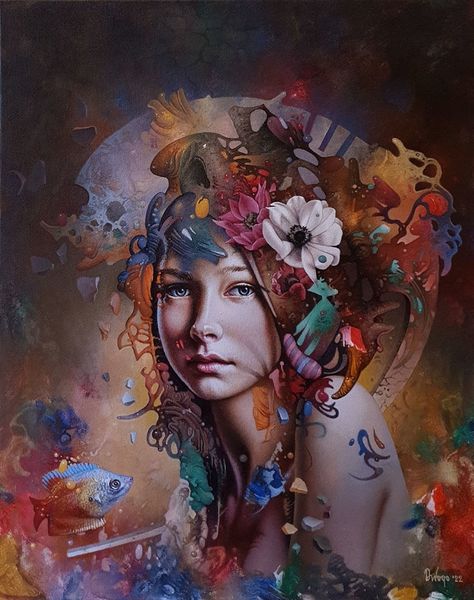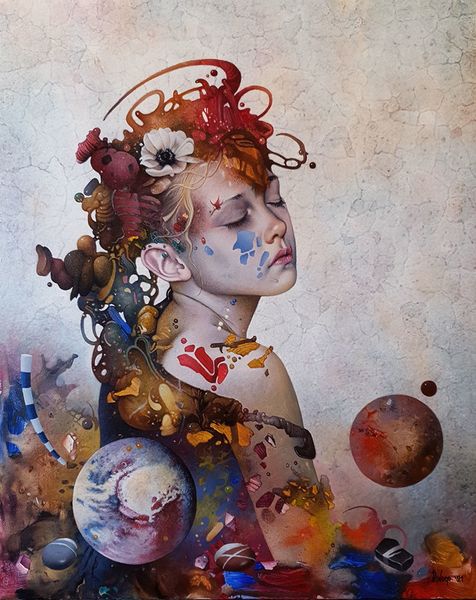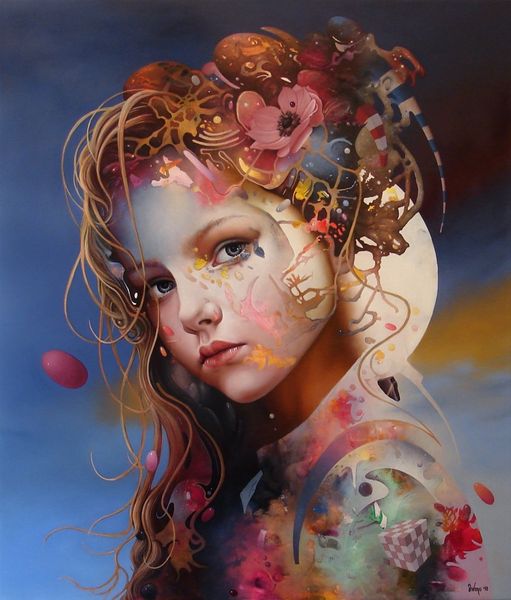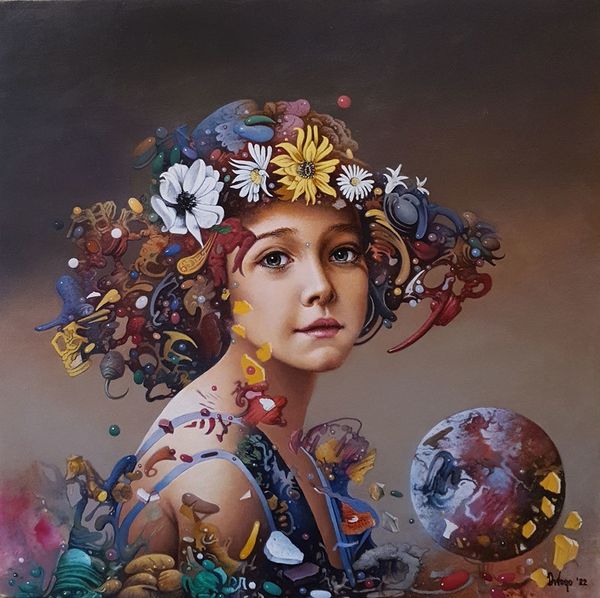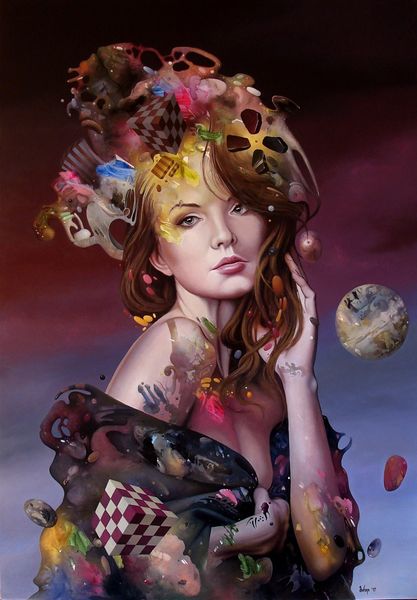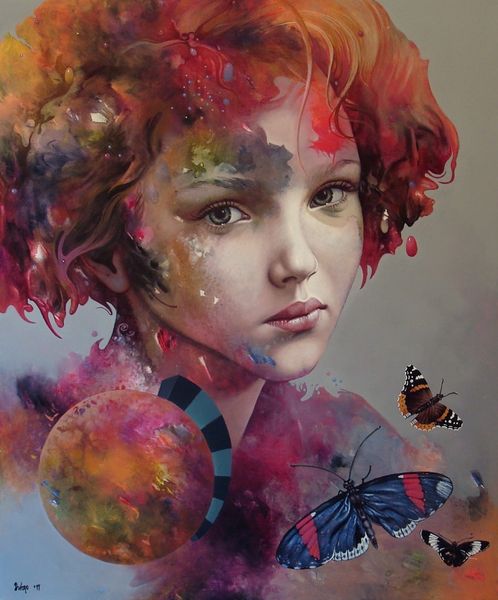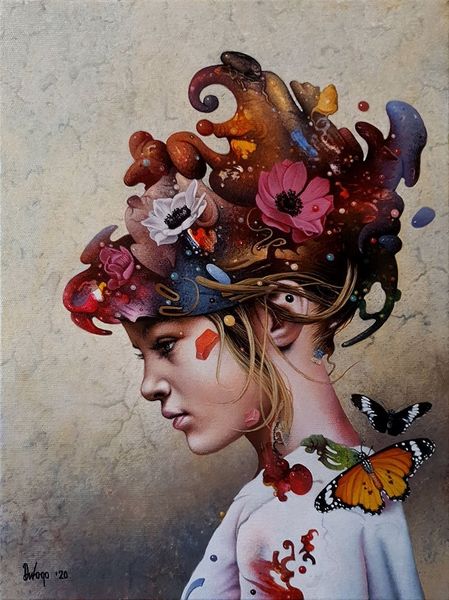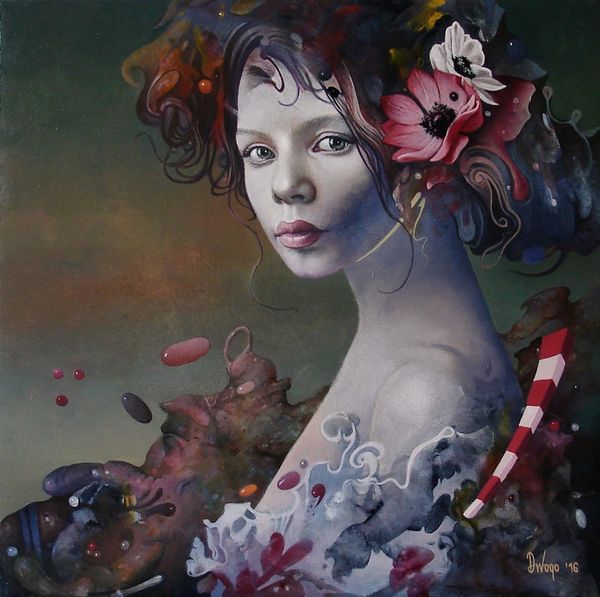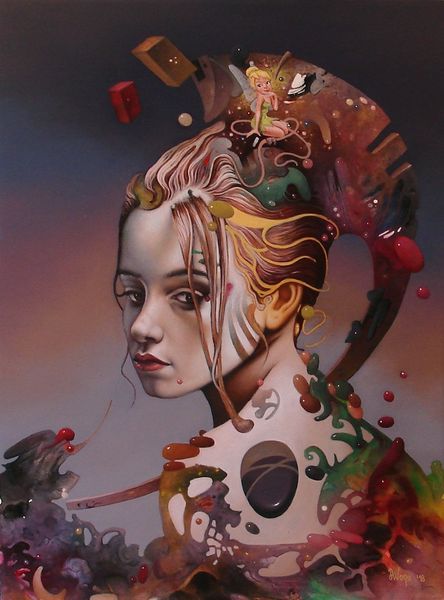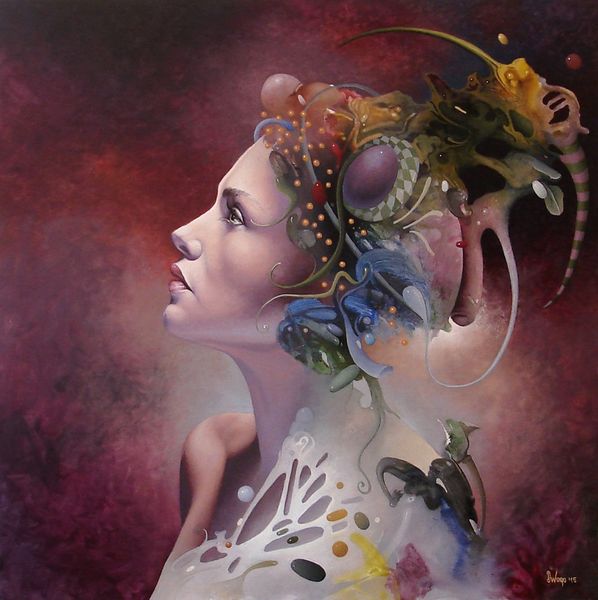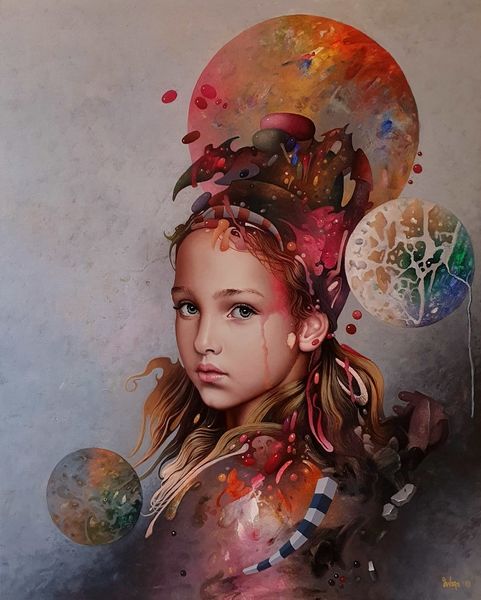
painting, oil-paint
#
portrait
#
contemporary
#
organic
#
fantasy art
#
painting
#
oil-paint
#
fantasy-art
#
figuration
#
neo expressionist
#
surrealism
#
modernism
Copyright: Modern Artists: Artvee
Curator: Looking at "Kalina" by Dragan Ilić Di Vogo, created in 2021, I'm struck by the painting's dreamlike quality, that combination of figuration and organic abstraction. The central figure exudes an ethereal beauty. Editor: My initial impression is one of disorientation, a strange mix of delicacy and... something unsettling. It reminds me of 17th century oil painting but there is a contemporary edge. I can’t put my finger on why just yet. Curator: The formal composition certainly supports that tension. Consider the juxtaposition of the smooth, almost classical rendering of the face against the wild, almost baroque explosion of color and texture in the headdress and surrounding elements. Note the unsettling, fractured details—those broken bits, like shards of porcelain. Editor: It’s definitely the use of oil-paint which throws me back to traditional methods. Di Vogo’s process becomes evident. The layers build up a world, with both classical elements and contemporary flourishes. The use of dark background makes her luminous skin shine and draws us in. But that orb, a small planet perhaps, sits separate, unconnected—almost manufactured—a foreign body in this constructed vision of nature. Curator: The symbolism becomes more pronounced as we analyze the structural relationship between these components. That floating sphere could represent the fragility of Earth, threatened by environmental decay, with the figure, “Kalina”, embodying a connection to nature and also an idealized, maybe unrealistic future of natural and artificial creation living in harmony. It also appears connected to her as if feeding from her energy, it's odd... Editor: I think the tension comes from Di Vogo's choice of traditional oil-painting—which suggests control, craft—used to create what feels like decay. Oil, which requires care and labor to apply, becomes the carrier of something corrupted, hinting at industrial practices ruining the natural, romantic headpiece around the model. Curator: Indeed. A fruitful insight, especially noting how it re-situates traditional art and its media within contemporary contexts, making the very art of painting itself a point of investigation into the state of current production, making it neither natural nor man-made but something in between. Editor: So, despite its unsettling qualities, this has made me question art’s place in broader discussions around labor, climate and human existence which feels strangely hopeful and despondent simultaneously.
Comments
No comments
Be the first to comment and join the conversation on the ultimate creative platform.
